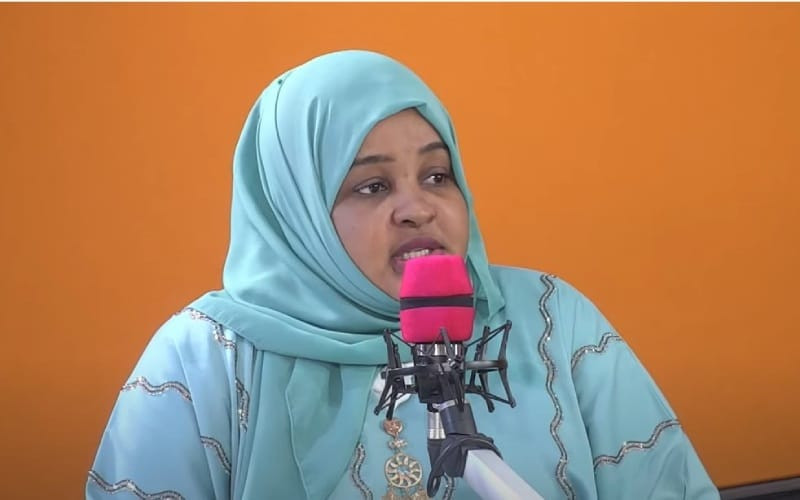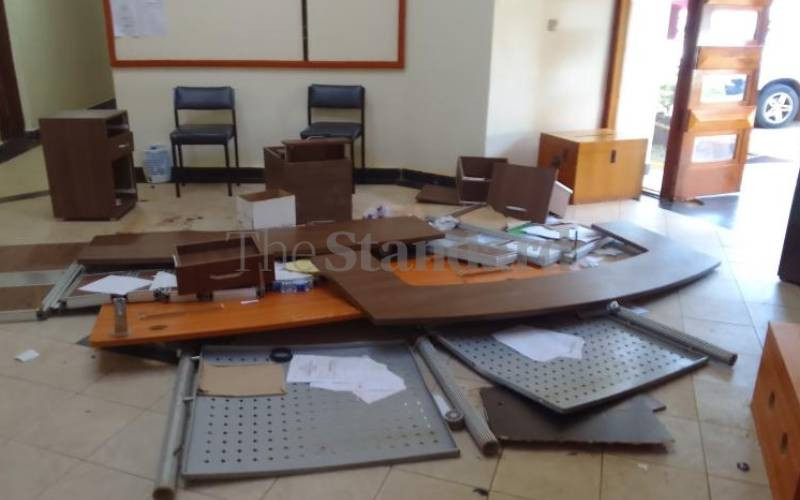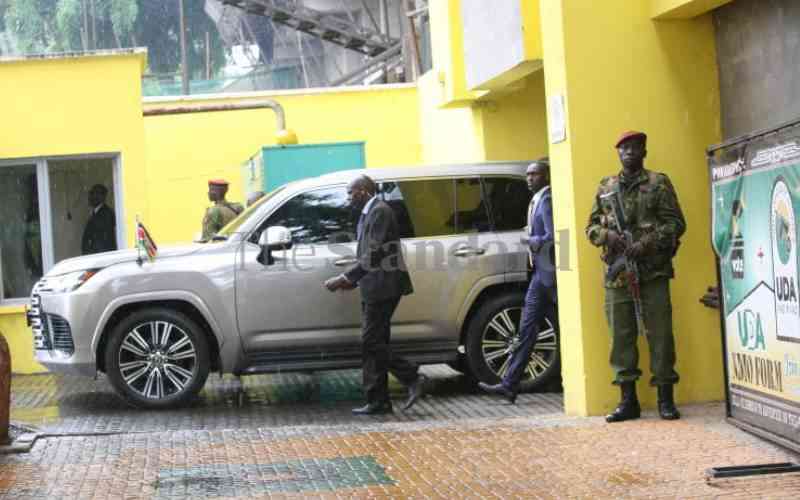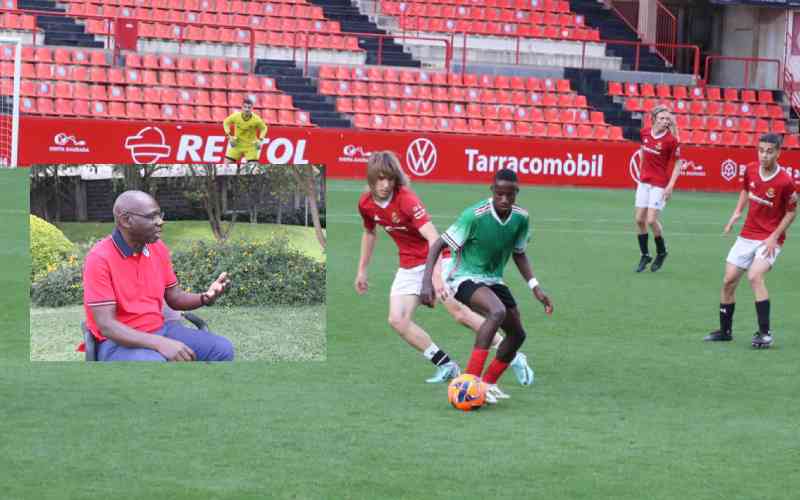By Peter Nguli
Tom Mboya was one of the most prominent personalities in Kenyan history. He was born Thomas Odhiambo Joseph Mboya on August 15,1930 and was assassinated at the tender age of 38 on July 5, 1969. It is widely believed that his profile and illustrious career as a brilliant and charismatic leader, which was seen as a challenge to the then political establishment, led to his assassination.
Mboya was born in Kilimambogo, near Thika town in what was called the White Highlands of Kenya. His parents were Leonard and Marcella Ndiege.
Mboya was educated at various Catholic mission schools. In 1942, he joined St Mary’s School Yala, a Catholic secondary school in Nyanza Province. In 1946, he went to the Holy Ghost College (later Mang’u High School), where he passed well enough to proceed to do his Cambridge School Certificate. Despite his parents being relatively poor, Mboya was educated at various Catholic mission schools, successfully completing his secondary school education.
In 1948, Mboya joined the Royal Sanitary Institute’s Medical Training School for Sanitary Inspectors at Nairobi, qualifying as an inspector in 1950. It was one of the few places which also provided a stipend during training. Although small, this was enough to allow him to live independently in the city. On completion of his course, he was offered an inspectors position in Nairobi and shortly afterwards asked to stand as secretary of the African Employees Union. He joined the African Staff Association and was elected as its president only a year into its membership. He transformed the association into a trade union called the Kenya Local Government Workers Union in 1952.
Later on, he was fired from work, but he held on to his position as the Secretary General of Kenya Labour Workers Union.
Hitherto, 1951 had seen the start of the Mau Mau rebellion and in 1952, the colonial British government declared a state of emergency. Politics and ethnicity in Kenya were closely intertwined — the majority of Mau Mau members were from the Kikuyu, Kenya’s largest tribe, as were the leaders of Kenya’s emerging African political organisations. By the end of the year, Jomo Kenyatta and over 500 other suspected Mau Mau members had been arrested.
Entry into politics
According to records kept in British Museums, Mboya stepped into the political vacuum by accepting the post of treasurer in Kenyatta’s party, the Kenya African Union (KAU), and taking effective control of nationalist opposition to British rule. In 1953, with support from the British Labour Party, Mboya brought Kenya’s five most prominent labour unions together as the Kenya Federation of Labour (KFL). When KAU was banned later that year, KFL became the largest “officially” recognised African organisation in Kenya.
Mboya became a prominent figure in Kenyan politics — organising protests against mass removals, detention camps and secret trials. This is how he played an important role in the struggle for independence.
However, what Mboya did not know was that the colonialists considered him as a big headache and so they laid down an effective plot of getting him out of the country as soon as possible. This worked out perfectly.
That way, they could have ample time to quash the Mau Mau rebellion in his absence. So the British Labour Party arranged for a year’s scholarship (1955-56) to Oxford University, studying industrial management at Ruskin College.
By the time he returned to Kenya, the Mau Mau rebellion had been effectively quashed. Over 10,000 Mau Mau rebels were estimated to have been killed during the disturbance, compared to just over 100 Europeans. But on the positive side, he gained from his studies in UK and acquired skills to soldier on in the struggle for independence.
Mboya and Pan-Africanism
By the time he returned to Kenya, there was not much representation of Africans in the Legislative Council (LegCo). The council consisted of 50 members, but there were only eight African leaders. This resulted to Mboya forming the Peoples’ Congress Party (PCP) in 1957. Due to similar views shared about Pan-Africanism between Mboya and Kwame Nkrumah of Ghana, a great friendship emerged. Pan-Africanism movement was gearing towards the unification and oneness of all the Africans, both within and out of Africa.
Stay informed. Subscribe to our newsletter
In 1958, Kwame organised a conference: All-African Peoples’ Conference in Ghana. It was attended by African leaders from both the independent and under colonial rule countries. Mboya, who was in attendance, was elected to chair the conference. The topic of discussion was Independence of Africa in whole.
He was elected chairman and declared it “the proudest day of my life”. The following year, he received his first honorary doctorate and helped set up the African-American Students Foundation (AASF), which raised money to subsidise the cost of flights for East African students studying in America. The project was called Airlift Africa. It was meant to help Kenyan students further their studies in United States universities. The project succeeded in helping 81 Kenyans and expanded to other African countries like Zimbabwe, Uganda, Zambia, Malawi and Tanzania. In total, 230 African students benefited.
It is quite imperative to note that Barack Obama’s father, Barack Obama Sr, was Mboya’s friend and a fellow Luo. And although he was not on the first airlift plane in 1959, he received a scholarship through the AASF and occasional grants for books and expenses. In 1960, the Kennedy Foundation agreed to underwrite the airlift, after Mboya visited Senator J Kennedy to ask for assistance. This explains how Airlift Africa was extended to Uganda, Tanganyika and Zanzibar (now Tanzania), Northern Rhodesia (Zambia), Southern Rhodesia (Zimbabwe), and Nyasaland (Malawi).
PCP, KAU and Kenya Independent Movement merged and became the Kenya African National Union (Kanu) on January 15,1960. Mboya was elected Secretary-General.
The merge was supposed to help in overcoming the different issues arising due to tribal differences. They also wanted to have a stronghold during the upcoming Lancaster House Conference whereby the issues pertaining to Independence and constitution of Kenya were to be discussed. Mboya headed the Kenyan delegation in the conference.
In 1960, Jomo Kenyatta was still being held in detention. Kenyatta was considered by a majority of Kenyans to be the country’s nationalist leader, but there was great potential for ethnic division amongst the African population. Mboya, as a representative of the Luo, the second largest tribal group, was a figurehead for political unity in the country. Mboya campaigned for Kenyatta’s release, duly achieved on August 21,1961.
In 1962, Mboya married Pamela Mboya, daughter of Walter Odede, a politician. They bore five children; Maureen Odero, Susan, Luke, Peter and Patrick Mboya.
In 1963 after Independence, Mboya was elected as the Member of Parliament of Nairobi Central Constituency, currently Kamukunji Constituency. He was initially given the post of Minister for Justice and Constitutional Affairs, then moved to Minister for Economic Planning and Development in1964, a period during which he came up with the “Sessional Paper Number 10”. The paper, which was implemented by the Kenyan Parliament in 1964, was about the Principles of African Socialism and also the Harambee policies, which provided a government platform based on African merits. It is argued that Mboya was being groomed by Kenyatta as a potential successor, a possibility which deeply worried many of the Kikuyu elite. When Mboya suggested in Parliament that a number of Kikuyu politicians (including members of Kenyatta’s extended family) were enriching themselves at the cost of other tribal groups, the situation became highly charged and then came a final nail in the coffin.
It was on a quiet Saturday afternoon of July 5, 1969 in Nairobi and Mboya was going about his shopping in downtown Nairobi. He stepped into Chhani’s Pharmacy to buy a bottle of lotion. As he emerged, an assassin opened fire, escaping in the ensuing confusion. Mboya was struck in the chest. He died in an ambulance on the way to Nairobi Hospital. Grieving Kenyans soon gathered in such numbers at the hospital that baton-wielding police were called out to keep the crowd at bay.
He had been shot along Government Road (now Moi Avenue) outside the Chania’s (also referred as Chhani’s) pharmacy. The assassin, Nahashon Isaac Njenga Njoroge, was arrested and convicted. He was sentenced to death by hanging. After his arrest, Njoroge asked: “Why don’t you go after the big man? Who he meant was never divulged, but fed conspiracy theories since Mboya was seen as a possible contender for the presidency. The mostly tribal elite around Kenyatta has been blamed for his death, which has never been subject of a judicial inquiry.
Remembering a great pan Africanist
Mboya’s role in Kenya’s politics and transformation is the subject of increasing interest, especially with the coming into scene of American politician Barack Obama II.
Obama’s father, Barack Obama Sr, was a US-educated Kenyan who benefited from Mboya’s scholarship programme in the 1960s, and married during his stay there, siring the future Illinois Senator and current US President. Obama Sr had seen Mboya shortly before the assassination and he even testified at the ensuing trial. Obama Sr believed he was later targeted in a separate hit-and-run incident as a result of this testimony.
Mboya was laid to rest in Rusinga Island. During his burial, chaos by mourners erupted following the then President Kenyatta attending the burial.
Only 38, the handsome, articulate Mboya embodied many of the qualities so urgently needed by the fledgling nations of black Africa. He was a member of Kenya’s second largest tribe, the Luo.
But he saw his real loyalties to Kenya’s detribalising urban classes and made them his constituency. He was an early and fervent apostle for his country’s freedom, inspired by Kenyatta. But he deplored the violence and bloodshed of the Mau Mau uprisings against the British and refused to participate in them. He became the architect of independent Kenya’s major documents, including its constitution. He also pleaded eloquently for a Marshall Plan for all Africa, for the creation of an African economy, and “the brotherhood of the ‘extended family’ in a United States of Africa.”
He will forever be remembered for helping set Kenya free from colonialism. Rest in peace, Tom Joseph Mboya.
Peter Nguli
[email protected]
 The Standard Group Plc is a
multi-media organization with investments in media platforms spanning newspaper
print operations, television, radio broadcasting, digital and online services. The
Standard Group is recognized as a leading multi-media house in Kenya with a key
influence in matters of national and international interest.
The Standard Group Plc is a
multi-media organization with investments in media platforms spanning newspaper
print operations, television, radio broadcasting, digital and online services. The
Standard Group is recognized as a leading multi-media house in Kenya with a key
influence in matters of national and international interest.
 The Standard Group Plc is a
multi-media organization with investments in media platforms spanning newspaper
print operations, television, radio broadcasting, digital and online services. The
Standard Group is recognized as a leading multi-media house in Kenya with a key
influence in matters of national and international interest.
The Standard Group Plc is a
multi-media organization with investments in media platforms spanning newspaper
print operations, television, radio broadcasting, digital and online services. The
Standard Group is recognized as a leading multi-media house in Kenya with a key
influence in matters of national and international interest.









